Written by: Najeeba Syeed, El-Hibri Endowed Chair and Executive Director, Interfaith Institute
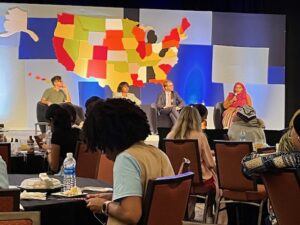
I recently sat across a room of 500 students and faculty from around the country, gathered for the annual Interfaith America summit. My own student was in the audience. I have looked at thousands of students, across hundreds of rooms in the last 15 years of my career as a professor.
I have also had the honor of serving as a staffer to an elected official, and have mediated dozens of conflicts in many contexts. Imbued in all of these spaces, and in the most recent times, I have begun to understand how much we must think about democracy with an everyday lens. How do people express their opinions on policy, how do they organize to have their voices heard, and why is decision making often left to those who have formal power?
Where have the voices of everyday people gone? Maybe it is time to think about a model of:
Everyday democracy, coupled with the skills of care, and built on an ethic of hope.
What does it mean to be a chaplain for everyday democracy?
Listening, Humble Listening
One of the students in my interfaith scholars class last semester, Vernis Campbell, talked about learning to listen in her own words: humble listening. To set aside the ego and hear the pain of another. She captured a foundation of engagement that is often missed.
When we try to build spaces for exercising civic engagement, we should also pay attention to the barriers that people face. Some are resource driven, and some are trauma induced. Engagement in systems takes vulnerability. We open ourselves and communities to the gaze and eyes of power that may be connected not just to decisions we disagree with, but decisions that hurt us or our communities.
A chaplain for democracy listens, does not bully someone into engagement. They are curious, they walk with the person, they hear the pain and it becomes a part of the process of how one relates to everyday democracy. Humble listening, if practiced by more with access to power, does not dismiss the connection between people and policies. It opens the door to understanding how past policies injured others and also to building new ones that are inclusive, durable, effective and efficient.
I often ask people in conflict, “Who is human?”
We must open our own hearts to understand how we dehumanize others and how we are dehumanized. Policies built on dehumanization are the enemy to democracies. Let us learn to listen in a manner that humanizes everyone and builds societies predicated on common humanity. We may never reach common ground, but let us start with common humanity.
Multiply Power, not Subtract
We live in a time and space where the notion of power is a zero sum game. How can we spiritualize this discourse on power? Engage with people in ways that multiply a notion of power that is co-created?
Interdependence as the core of a chaplaincy for democracy is built on getting to our underlying interests and not just positions. We build processes and convenings not just focused on expressing the transactional, extractive modality of building power but also the collective care that people and communities seek. We build connections between communities across differences who are able to hear, see, feel and hold the other for a moment. It is often called ‘perspective-taking’, understanding a situation from the point of view of another.
I am hopeful that we can build an approach to dialogic engagement that is beyond the accumulation of power for one group, one community, and one candidate, and begin to think about chaplaincy as a model for power. An open ended conversation that seeks to empower everyone, a non judgmental open stance in the posture of the convenor and facilitator. A coaching of leaders to understand that values can be shared, but that it takes vulnerability to trust one another over time. Trusting another is not a weakness, but actually a mutual strength.
Beyond the polls
Understandably, we focus on the ballot box as the generator for democracy. It is often the case that once someone is elected the fervor for them dies down. From campaigning to governance, one loses that connection to communities and individuals slow down in their engagement with democratic processes.
One of the roles we envision for higher education is a center for exercising democratic processes and principles. How do we build institutional capacity for diverging viewpoints and long term disagreements? I’ve been very curious to see that many institutions who have an affiliation with religious communities or bodies have been spaces for conversations on ethics and values in the past year. Perhaps our chaplaincy of care and commitment to mutual flourishing means the university becomes a space to protect all students. When values related to the big questions in life are embedded in how an institution runs, in how teachers educate, in how administrators make decisions, the bottom line is a human line. Are we building curricula that ask these moral and ethical questions in ways that are inclusive of students with different religious, spiritual and non religious commitments? A concern for the humanity of our students as the guiding principle.
As we begin to think about the day after the next election, perhaps we spend less time gloating for whatever side wins, and begin to think more about how we create communities of care, resilience and everyday democracy, together.
I often ask parties in conflict, “are you in each other’s future?” When we are in conflict, it is the painful present and past we are most focused on and the future eludes us.
I am in this for the long game, a future that includes you and me. Between elections, let’s listen, build, disagree, and co-create. Many spiritual traditions draw on the notion of making decisions with the next generations at the table. Engage with your body, your community and the many who will come next, as if they are all on the line. Sometimes the way through is to open your line of vision to a future you cannot see yet; find uncommon allies and use hope as your fuel to get there.
Our futures depend on it.
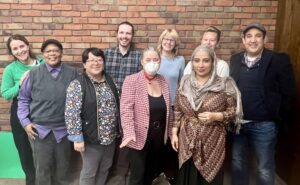


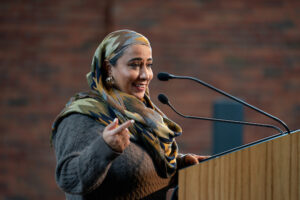 Augsburg hosted its first Interfaith Spring Symposium in March 2023. The topic was “Interfaith Leadership and Healing During Times of Crisis.” El-Hibri Chair and Executive Director of the Interfaith Institute at Augsburg, Najeeba Syeed, gave the keynote lecture.
Augsburg hosted its first Interfaith Spring Symposium in March 2023. The topic was “Interfaith Leadership and Healing During Times of Crisis.” El-Hibri Chair and Executive Director of the Interfaith Institute at Augsburg, Najeeba Syeed, gave the keynote lecture.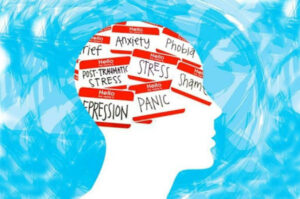
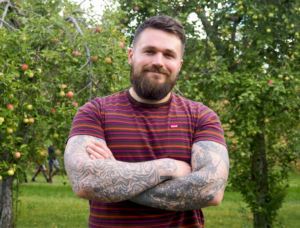 The Interfaith Institute is thrilled to welcome nationally-recognized interfaith advocate, humanist community builder and researcher, and Augsburg alum Chris Stedman ‘08 to the institute as our inaugural Research Fellow. Chris will be focusing his research on the religiously unaffiliated and religious indifference. His work is a vital contribution to understanding the current state of diverse belief systems of students in higher education and younger generations across society, particularly the widely misunderstood religiously unaffiliated population. He will be sharing his research with the larger campus community and beyond at the end of his Fellowship.
The Interfaith Institute is thrilled to welcome nationally-recognized interfaith advocate, humanist community builder and researcher, and Augsburg alum Chris Stedman ‘08 to the institute as our inaugural Research Fellow. Chris will be focusing his research on the religiously unaffiliated and religious indifference. His work is a vital contribution to understanding the current state of diverse belief systems of students in higher education and younger generations across society, particularly the widely misunderstood religiously unaffiliated population. He will be sharing his research with the larger campus community and beyond at the end of his Fellowship. 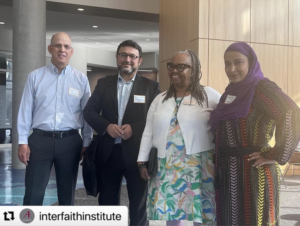
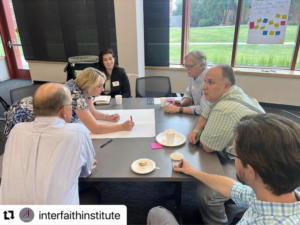
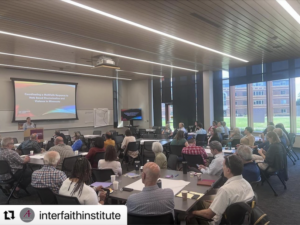
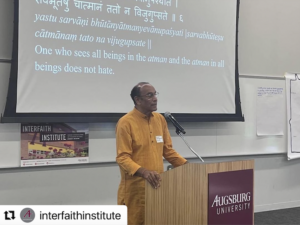
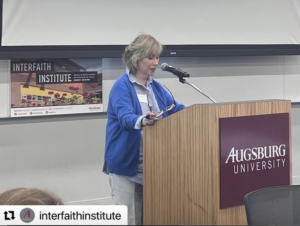
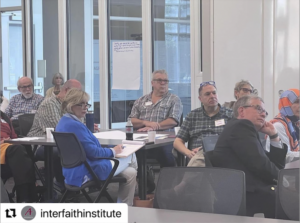
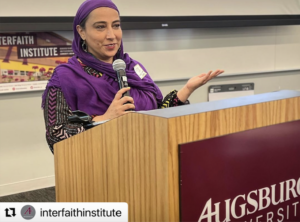
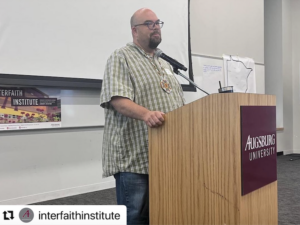
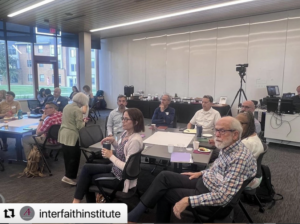
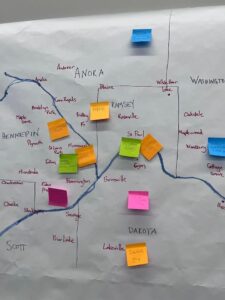
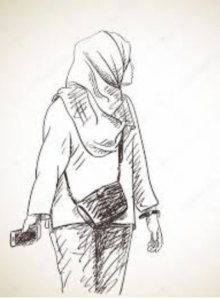 Last week I attended Interfaith America’s Leadership Summit. One of the elements that struck me as I walked into the hall of hundreds of undergraduate students was the number of Muslim women who were in attendance, and I had the pleasure of speaking with them throughout the weekend.
Last week I attended Interfaith America’s Leadership Summit. One of the elements that struck me as I walked into the hall of hundreds of undergraduate students was the number of Muslim women who were in attendance, and I had the pleasure of speaking with them throughout the weekend. 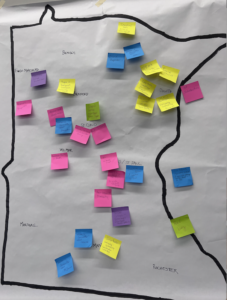 Multi-Faith Relations in Rural Settings
Multi-Faith Relations in Rural Settings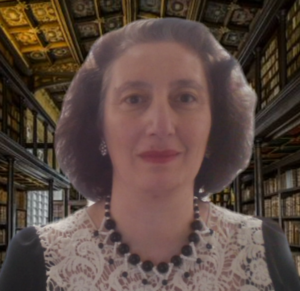 The Augsburg University Interfaith Institute is delighted to announce that Dr. Thea Gomelauri will be joining the Institute as a Senior Fellow. The fellowship is a key anchor in the partnership between Oxford Interfaith Forum and the Institute. Our Executive Director, Najeeba Syeed has also been appointed to a senior fellowship at the Oxford Interfaith Forum. We look forward to a joint collaboration across the globe on issues of peace, justice, intercultural and interfaith education and furthering interreligious learning.
The Augsburg University Interfaith Institute is delighted to announce that Dr. Thea Gomelauri will be joining the Institute as a Senior Fellow. The fellowship is a key anchor in the partnership between Oxford Interfaith Forum and the Institute. Our Executive Director, Najeeba Syeed has also been appointed to a senior fellowship at the Oxford Interfaith Forum. We look forward to a joint collaboration across the globe on issues of peace, justice, intercultural and interfaith education and furthering interreligious learning.